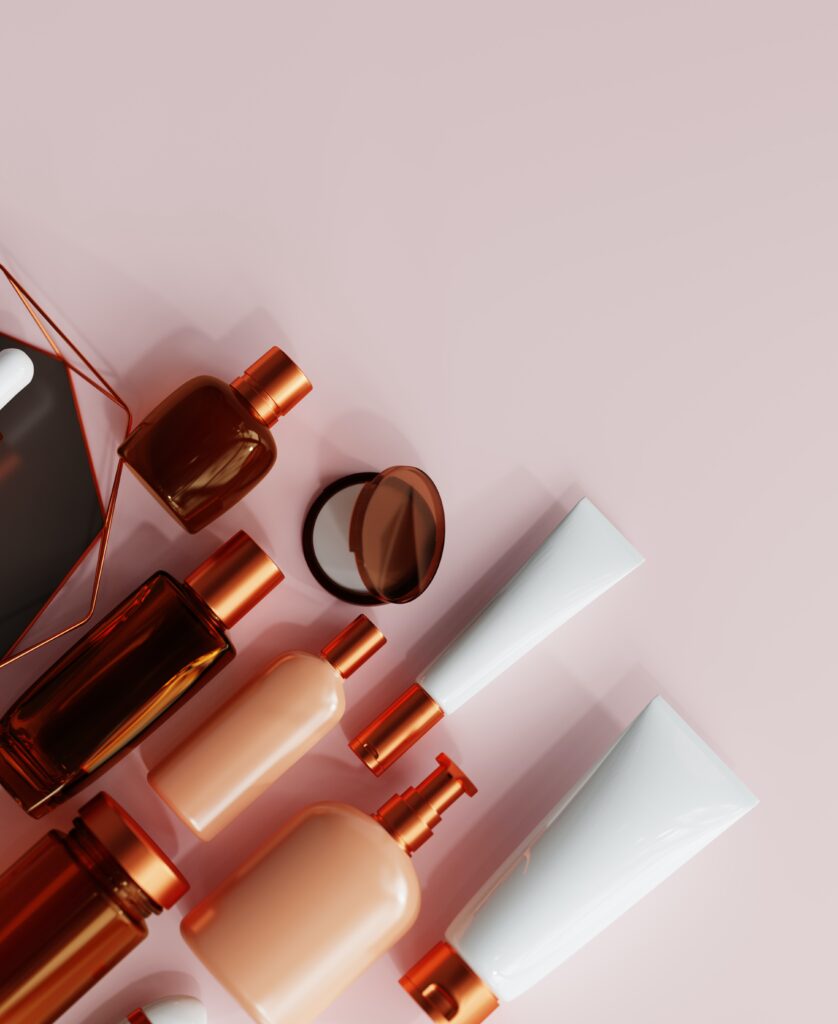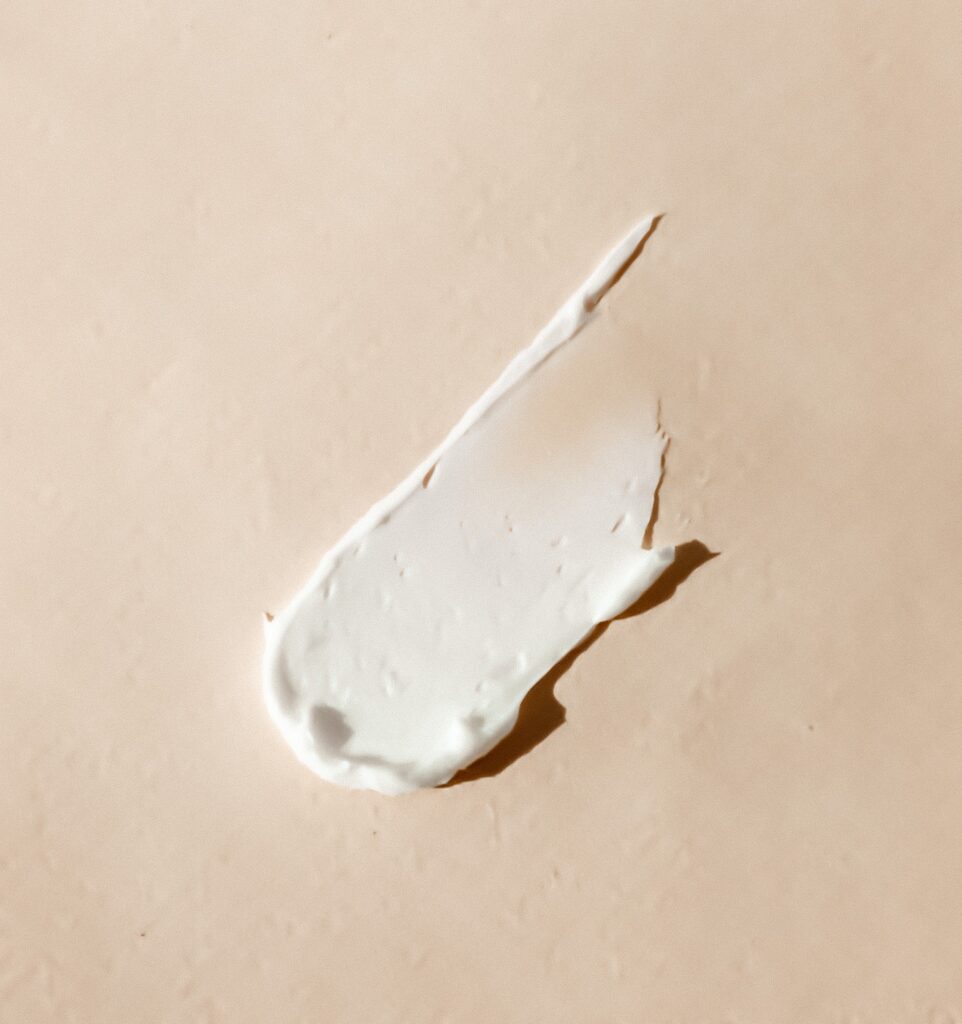News Team member Stephanie Oehler describes how the online "trad-wife" aesthetic fuels the flames of the anti-vaccination movement during the second-largest measles outbreak of the 21st century.

By: Zainab Molumo
I was not much older than I am now when I realized that the vast selection of cosmetics stashed behind the counters at my neighborhood international markets were not ordinary lotions and soaps but skin-lightening products. I just happened to be standing in front of the register at my local West African grocery shop, basket in hand, when I made the connection. As I stood there, bewildered and slightly distraught, I wondered what could be the cause of my delayed realization. Perhaps it was conditioning.
Despite its ubiquity in many immigrant communities, including my own, the lack of conversation around skin-lightening in these same circles made the issue seem taboo. Or, maybe I had just been carelessly inattentive for too many years. Whatever the case, the discovery inspired both intrigue and concern in me. Leaders in medicine and public health have long warned of the severe health consequences of skin-lightening, yet the industry is projected to grow to $24 billion in value within the next half-decade. I couldn’t help but wonder how desirable the perceived benefits of skin-bleaching must be to make the risks seem inconsequential.
For much of my life, I have heard many reduce skin-lightening to a trend fueled by low self-esteem and even peer influence, which may be true superficially. But as is becoming increasingly apparent, skin-lightening is just as much a socio-cultural issue as it is a growing beauty trend. It is a matter informed by and best understood through an examination of history and the evolving power of skin to impact life trajectories.
An Overlooked Public Health Crisis
Skin lightening, also called skin bleaching or skin toning is “a cosmetic procedure that aims to lighten dark areas of skin or achieve a generally paler skin tone.” The majority of skin-lightening products, both prescription and over-the-counter, contain melanin inhibitors. These inhibitors block the production of and destroy existing melanin pigment, which is the biological compound that gives our skin, hair, and eyes their natural hues. Developed in modern contexts as a short-term medical intervention for skin conditions such as hyperpigmentation, melasma, and acne scarring, shifts in beauty culture over the past several decades have heightened demands for over-the-counter access to these products worldwide.[1] Today, the skin lightening industry is one of the highest-grossing and most rapidly growing divisions of the cosmetics trade. The reality of skin lightening’s unrelenting popularity across the globe, however, especially in parts of the global South, is a shocking and disturbing one.
Several of the most abundant and affordable skin lightening products on the market contain alarming amounts of known carcinogens and other highly toxic agents such as hydroquinone, mercury, glutathione, and corticosteroids. An abundance of research links long-term exposure to these agents to serious health consequences including liver and kidney damage, skin cancer, blood poisoning, and birth defects in developing fetuses.[1,2] It is for this reason that less than a decade ago, the WHO declared skin lightening a global public health crisis. Yet, efforts to stall skin lightening use and availability in recent years have been minimally effective.
In countries such as Nigeria and India, where over 60% of women report using skin-lightening products, stringent federal regulations (e.g., tighter customs surveillance and import restrictions) have been implemented in hopes of deterring the use and sale of harmful skincare cosmetics.[1,2] Some nations have even gone as far as banning all products containing hydroquinone, mercury, and other toxins, prohibiting both the import and sale of any skin-bleaching agents. Yet, large shipments of banned and unapproved products are smuggled in by customs personnel and make their way to shop shelves and market displays by the ton.[3]
Beyond the port, enforcement of anti-skin lightening measures is equally weak. In a documentary short highlighting South Africa’s battle with regulating its skin bleaching market, law enforcement squads are seen arresting shop owners and hauling away crates filled with contraband skin-lightening items.[4] Yet, according to task force leaders, vendors restock these products almost as soon as they are confiscated, indicating a demand for lightening products that clearly supersedes efforts to protect and promote public safety. What the motivations are that drive this inconceivable demand are both of interest and concern.
“…light skin get[s] more attention.”
–Bobrisky (Idris Okuneye Olarenwaju), Nigerian Influencer
Motivating Factors
Reasons for skin-lightening are variable and personal. The most commonly cited considerations, however, seem to boil down to desirability and social mobility. In the Netflix documentary, Skin, Nollywood actress and producer Beverly Naya explores the relationship between skin, self-image, and social status in Nigeria, a racially homogenous African society with one of the highest rates of skin-lightening in the world.[5] The film includes interviews from prominent social figures and media influencers like British-Nigerian actress Diana Yekinni, who recounts her struggles with acceptance in the film industry because of her dark skin, and transgender social media personality and beauty icon Bobrisky (Idris Okuneye Olarenwaju), who attributes her fame and wealth to her own personal use of skin-lightening cosmetics in addition to establishing herself as an international retailer of her own line of products. Naya also captures the other views and voices of several others, interviewing shopkeepers, artists, cosmetologists, physicians, passerbys, and even her own family and friends.
As the film reveals, there are several arguably compelling reasons for skin-lightening. According to Bobrisky, “people…are desperate to use [lightening] cream because when they see the natural, fair light skin girl, they see them as a threat…light skin get[s] more attention,” suggesting that skin color is somehow attached to desirability. Cosmetic dermatologist, Dr. Akhere Aire, who has encountered many cases of severe skin damage due to bleaching, reiterates Bobrisky’s claim. When asked what reasons patients have given for skin bleaching, Aire noted “people say it’s more attractive.” Yet, he also emphasizes that the more desirable appearance that many hope to achieve by skin-lightening is not limited to dating. It encompasses economic and social opportunity as well. “There are some industries that seem to claim that it [skin-lightening] is more beneficial to get you to your life goals…[for example] there are certain modeling agencies that prefer light skin over dark skin,” Aire says. Skin color for many in Nigerian society is evidently not only a matter concerning self-esteem, but external perception and validation–it impacts access to opportunities and status, making it all the more alluring even when its negative effects promise much more trouble than might be worthwhile.
Nigeria is not alone in its ideas about and attitudes toward skin color. Countless others with platforms like Bobrisky’s exist across the globe–the Blac Chynas (American model), Charlene Pegas (Filipina influencer), and Mshozas (South African rapper and beauty icon) of the world. Active discrimination against darker skin permeates job markets and dating scenes in virtually every corner of our global sphere. In societies everywhere, lighter skin is venerated and highly sought after. These observations are rooted in reality, disheartening as they are. Yet, they fail to address an important underlying question, which is where the obsession with lightness even comes from?
“Skin isn’t just skin, skin has social and racial, historical, political, and sociological meaning.”
-Joanne L. Rondilla, Professor of Asian American Studies
Colonialism, Colorism, and Skin
Albeit largely unacknowledged, skin-bleaching is not the isolated product of cultural and social changes in recent decades; its true roots are in European colonialism and Western imperialism. The WHO reports that skin-lightening is present everywhere in the world but is most prevalent in parts of the “Global South”–Africa, Asia, Latin America, and the Caribbean.[2] Although physically distant, the common denominator amongst all of these regions is that they have experienced some form of colonization by European forces at a point in their histories. While the legacy of decades of white dominance and racial inequality bred by colonialism in these areas are many, a particularly notable one is colorism. Adjacent to but not synonymous with racism, colorism describes a system of discrimination and prejudice manifested within ethnic and/or racial groups.
According to trained sociologist and Asian American Studies, Dr. Joanne Rondilla, “skin isn’t just skin, skin has social and racial, historical, political and sociological meaning.” This statement is a particularly powerful tool for contextualizing the upward trend in skin-lightening’s global popularity, even its existence. For the majority of post-colonial societies, the conflation of whiteness with wealth, power, and prestige during the colonial-era quickly transformed skin color from a biological trait into an enviable and eventually desirable social status.[5,6] White, or at least lighter, skin, therefore, became not only the standard of beauty in colonized states but also a form of favor with respect to life condition, albeit still relatively disparate for most indigenous peoples. Now, even in the wake of Modern era colonialism–which for many countries ended only a few decades ago–colorism still thrives in post-colonial societies as neocolonialism and Eurocentricity uphold whiteness as the standard of human superiority and perfection. Ultimately, it would seem, skin-lightening has emerged as a way of defying “unfavorable” genetics by making the status that has become whiteness attainable.
Pushing Back against Toxic Beauty Standards
While skin-lightening’s grasp on much of the post-colonial world remains strong, push back against the unrealistic beauty and social standards it reinforces has been equally firm in recent decades. Contemporary movements like the Black Lives Matter movement in the U.S. and Rhodes Must Fall in South Africa have spurred global dialogue about systemic racism and neocolonialism, in turn giving increased visibility to the lasting and significant effects of racism and colorism across our modern world. From this fight to be seen and humanized has emerged another campaign entirely–a skin-positivity movement, one in which non-white identities are encouraged to practice self-acceptance while simultaneously challenging systems and ideals that invalidate their natural appearances. Gradually, but assuredly the shadow of secrecy and shame which enshrouds skin-lightening is being lifted. With the lifting of this cloud is the initiation of much overdue conversation about the bitter truth, and hopefully the eventual end, to a beauty trend that has too long threatened collective health and the sheer wealth that is human diversity.
References
- Pollock, S., et al. (2020). The dark side of skin lightening: An international collaboration and review of a public health issue affecting dermatology. International journal of women’s dermatology, 7(2), 158—164. https://doi.org/10.1016/j.ijwd.2020.09.006
- “Mercury in Skin Lightening Products.” (2019). https://www.who.int/publications-detail-redirect/WHO-CED-PHE-EPE-19.13 (October 27, 2021).
- Refinery29. 2019. Why People Risk Their Lives To Bleach Their Skin | Shady | Refinery29. https://www.youtube.com/watch?v=hYTIh2cXfvM (October 27, 2021).
- Skin Bleaching Scandal in South Africa | Unreported World. 2018. YouTube, https://www.youtube.com/watch?v=bWHCwXZpH6E.
- Etim Effiong, D. (Producer) & Naya, Beverly (Director). (2019). Skin [Video File]. Retrieved from https://www.netflix.com/.
- Nyamnjoh, B. (2016). #RhodesMustFall: Nibbling at Resilient Colonialism in South Africa. Langaa RPCIG.


